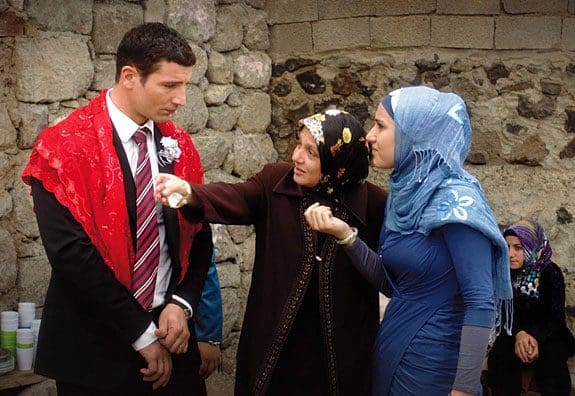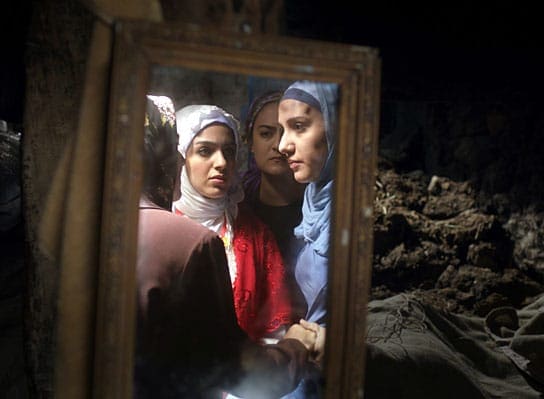Kuma – literally translated as co-wife or second wife – is Umut Dag’s impressive debut as a Director in what an earnest and intimate depiction of how a Turkish / Kurdish family unit transfers over to European culture and the tensions that arise.
The movie starts with the wedding of Ayse, tenderly played by Begüm Akkaya, to Hasan somewhere in eastern Turkey.
In a subtle yet substantial plot twist the viewer finds that Ayse has in fact been married and brought back to Austria to be the second wife of Hasan’s father Mustafa. A move which puts pressure on the on everyone involved. The claustrophobia of the setting highlighted by a cinematic move from the sparse spaces of the mountainous region of Ayse’s homeland to a crowded apartment; where she now stands in a room with her new husband and his first-wife Fatma.
Very little film lapses between during this geographical move: the festivities end and we are soon showed a bed being prepared for the consecration of the marriage. The ritual is forced home by Fatma in spite of Mustafa’s insistence that the deed need not be done on that night. Dainty Ayse passively listens and waits as the married couple discuss how she will spend the night.
The tone is set for the development of a lascivious relationship. But, and an intricate script does well to bring this out, any lust or intimacy between Ayse and Mustafa is void. Instead, a bond grows between Ayse and Fatma, a largely unspoken intimacy underneath the duty of the roles that they are set to play in a very unorthodox situation.
Seemingly encroached upon in all directions by a foreign language, hostile members of the family, secrecy and her own acceptance of the predicament, saintly Ayse’s thoughts and desires seem a million miles away. What ensues is a helter-skelter of emotions and possibly one too many twists in a packed narrative – one less scandal and Dag’s film would be all the more palatable, but would it be less apprehending?
The success of Kuma is not that it highlights a practice that blights women in deep Anatolia – it’s very difficult to tell how prevalent the practice is as it’s against the law in Turkey – but how it uses the depiction of kuma to bring into focus other cultural and often sexual tensions immigrant families might experience in their new environment. It represents the unsayable and untranslatable. And how, if this is a feminist story, even women can take on fiercely masculine roles in patriarchal settings.
KUMA is showing now in UK cinemas. You can find an official trailer here.
words Ramis Cizer






















